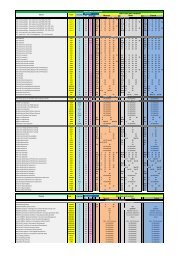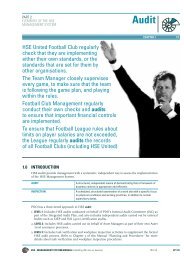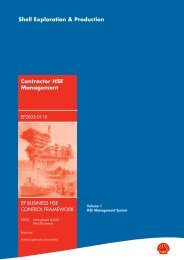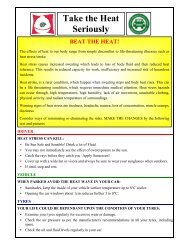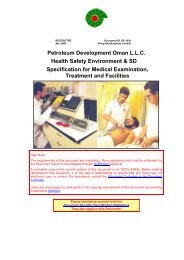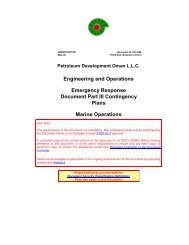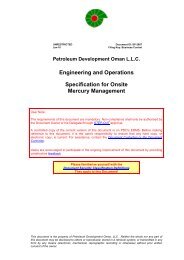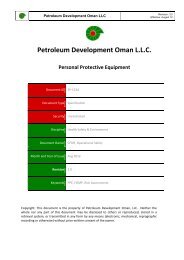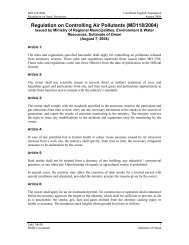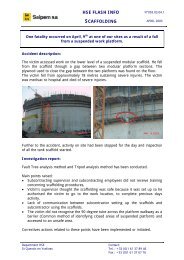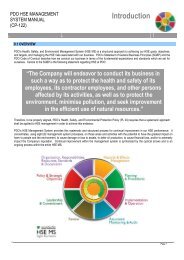Estate Service Asset - PDO
Estate Service Asset - PDO
Estate Service Asset - PDO
You also want an ePaper? Increase the reach of your titles
YUMPU automatically turns print PDFs into web optimized ePapers that Google loves.
Petroleum Development Oman<br />
<strong>Estate</strong> <strong>Service</strong>s <strong>Asset</strong><br />
Environmental Assessment<br />
2002 Review and Update<br />
the temperature of the incinerators reaches 60 o C, the primary chamber is opened and<br />
the remaining ash is removed.<br />
The combustion gases are released into the atmosphere through a stack, with a release<br />
height of about 10 m above the ground level. Due to the presence of plastics and other<br />
synthetic materials in the waste, thermal degradation may generate toxic gases such as<br />
carbon monoxide, hydrogen chloride, hydrogen fluoride, dioxins and furans. The<br />
concentrations of these gases in the stack emissions are not known, since the stack<br />
gases are not monitored. Nevertheless, scrubbers are not considered necessary and<br />
hence not provided.<br />
4.3 Liquid Effluents<br />
4.3.1 Sources of Generation<br />
The liquid effluent streams generated in the areas serviced by estate services asset<br />
may be classified as continuous, intermittent and accidental. The continuous effluents<br />
consist of the sewage generated due to domestic use of water in the residential units,<br />
restaurants and the administrative buildings in the RAH and MAF areas. The<br />
intermittent effluents are mainly the wastewaters generated from carwash and<br />
workshops located within the MAF area. With respect to accidental (including oils,<br />
chemicals, water and wastewater), these may result due to leaks and spills of liquids<br />
due to pipeline failure, storage tank failure and road accidents. The leaks and spills<br />
usually get absorbed in the soils, resulting in soil contamination. Accidental leaks and<br />
spills are considered separately in section 4.6.<br />
The continuous and intermittent effluents are treated together in two STPs, one<br />
located in RAH and another located in MAF.<br />
4.3.2 Wastewater Treatment<br />
The wastewater generated from all the buildings and houses located within RAH and<br />
MAF flow through a network of underground sewers. Eighteen lifting stations placed<br />
at strategic locations to transport the raw sewage to the main STP. The sewage<br />
collected in the sumps is continuously pumped to the STPs, one located in RAH area<br />
(RAH-STP) with a design hydraulic capacity of 564 m 3 /d (after capacity<br />
enhancement) and another located in MAF area (MAF-STP) with a design hydraulic<br />
capacity of 540 m 3 /d (after capacity enhancement).<br />
©HMR Environmental Engineering Consultants C4 - 3<br />
Oman’s Environmental Consultancy<br />
HMR\1501\<strong>Estate</strong> <strong>Service</strong>s



